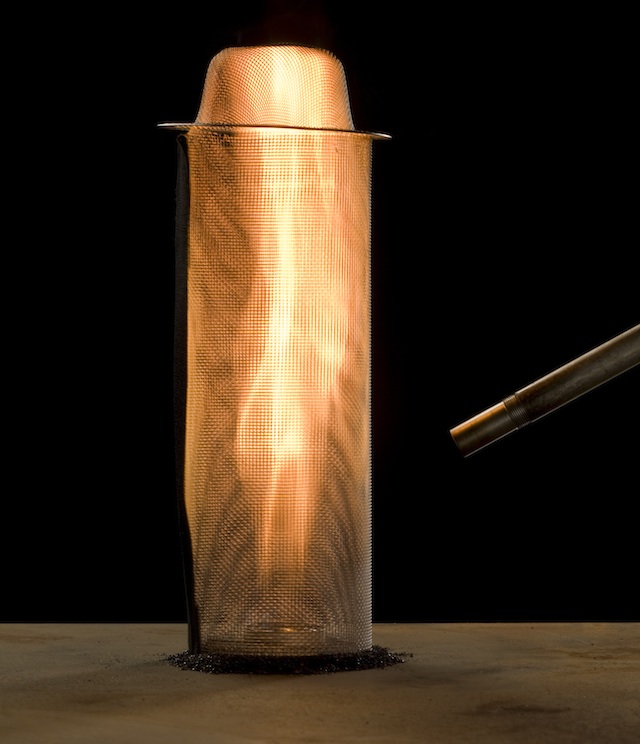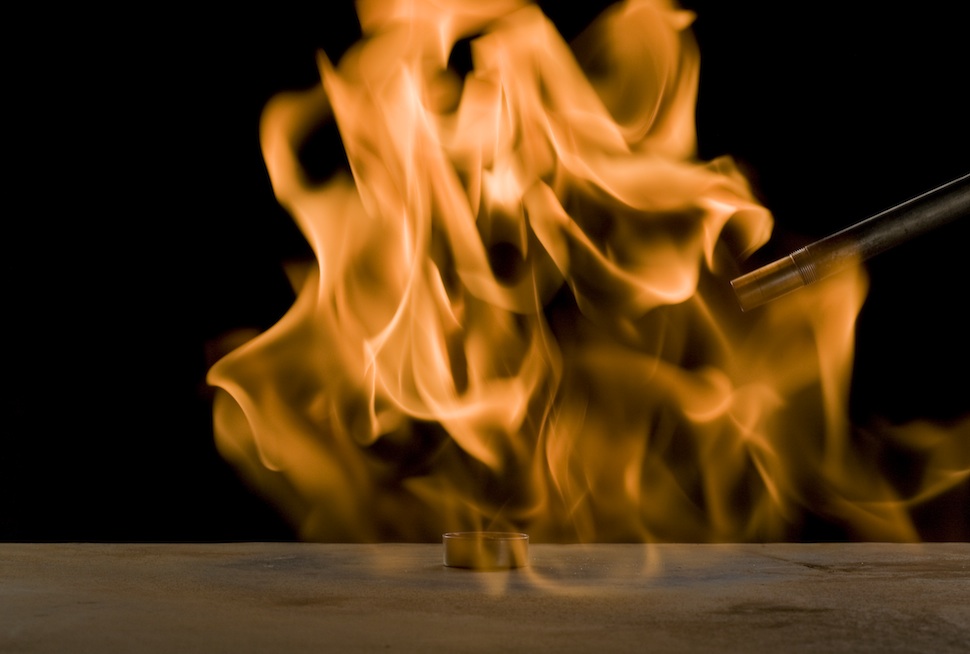If you were a coal miner in the early 1800s, the light you used was an openflame oil lamp — even though mines were sometimes filled with “fire-damp”, a volatile mixiture of air and methane gas. Explosions were inevitable and threw bodies from mine shafts like grapeshot from a cannon. Humphry Davy became a national hero when he found a remedy in 1815: surround the lamp flame with mosquito screen.
Theodore Gray, the author of Popular Science’s monthly column, “Gray Matter”, is convinced that when kids and adults are introduced to science in its most exciting form, they too will get hooked. In his newest book Mad Science2: Experiments You Can Do At Home, But Still Probably Shouldn’t, Gray wants to spark that curiosity with visually spectacular experiments that illustrate the principles, the beauty, and the power of science.
Why It Works
Davy, one of the world’s first professional scientists, solved the problem by systematically studying what happened when gases burned. He started with the observation that gas flames would not travel down long, thin metal tubes because the metal draws heat from the flame, lowering the temperature of the gas below the ignition point.
He tried making the tubes thinner and shorter, until he discovered that thin tubes needed to be only about as long as their diameter to prevent fire from travelling their length. The logical end point was fine metal mesh, which you could think of like thousands of very short tubes arranged in a grid.
As bizarre as it sounds (and I really didn’t believe it until I saw it with my own eyes), you can blow an explosive mixture of gases thorugh a fine wire mesh toward a candle flame and, when the gas explodes, the fire stops dead at the mesh — this despite the fact that the gas came right through the holes in the mesh and is just as explosive on the outside as it is on the inside.

Davy refused to patent his invention, preferring to bask in the glory of his role as the miner’s saviour. HIs lamp remained in use, and his name was a household word, right up until the invention of electric light. Today his lamp is all but foggotten, but his reputation as one of the first and greatest chemists lives on.
Real Danger Alert: Anytime you’re playing with explosive gases and open flames, the result will be dangerous blasts of fire. The Davy lamp does not work with all kinds of flammable mixture, nor does it work under all conditions
How I Did It
When attempting this demonstration, the most important thing is to make sure that there aren’t any leaks around the mesh where flame can find its way through. notice the small pile of sand at the base of the mesh in the photograph to the right: That’s to seal off the bottom. I used an aluminium mosquito screen, and the setup is as you see it, no special tricks to get it to work.
In my experience, propane works well, but not acetylene. Acetylene is just too flammable, and the flame passes easily through the wire mesh. Even with propone it will occasionally burn through, which means that good ventilation is a must to avoid blowing up the whole room.

The Davy lamp was at first considered a great boon, because it prevented explosions in mines when miners encountered pockets of explosive gases. Later people started to realise that mine operators were just using it as a crutch to avoid the better solution of making sure there weren’t any pockets of explosive gases in their mines in the first place. Because, lamp or no lamp, if there’s a a pocket of explosive gas, there’s a danger of it igniting one way or another.
In his new book, Mad Science2: Experiments You Can Do At Home, But Still Probably Shouldn’t, science enthusiast Theodore Gray illustrates the awesome power of science with illuminating behind-the-scenes tours of the potential of the world around us. His (often dangerous) experiments are sure to capture the imaginations of students and anyone interested in science or just plain old cool stuff.
